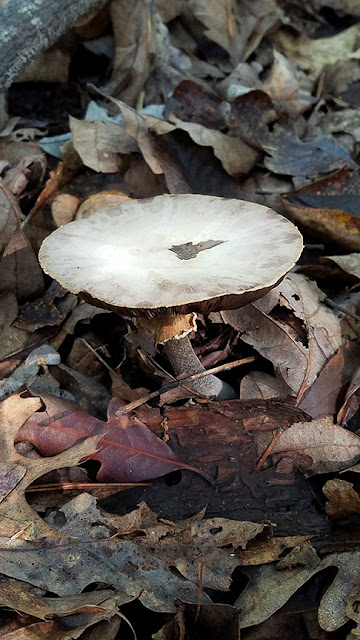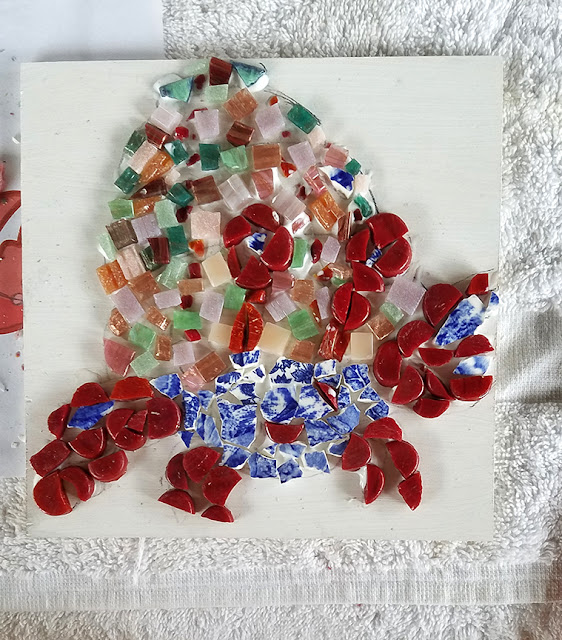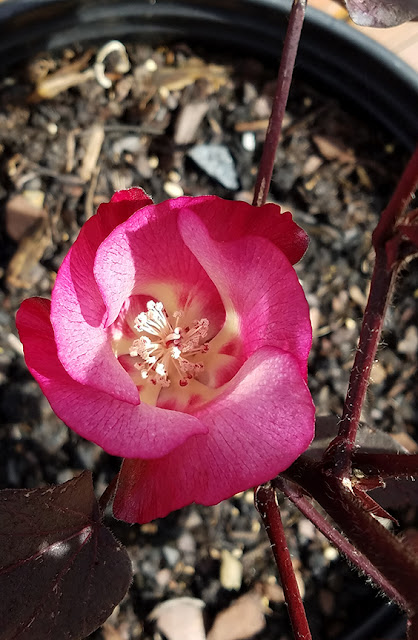 | |
| Mushrooms growing on fallen oak tree. |
Last weekend's tropical storm Ophelia dropped more than 2.5 inches of very welcome rain on our area. It's been such a dry year, I hadn't seen a single mushroom all spring and summer. Yesterday, after all that rain, seemed like a good time to look for mushrooms. I went out back to forage for specimens to sketch, and look what I found! A wealth of fungi on the fallen trunks of the old oak tree that came down two years ago--it's like having my very own mushroom factory!
 |
| The base of the oak trunk. |
The base of the old oak tree had these Turkey Tail polypores laddering their way up the trunk in lovely shades of violet and brown. The fallen trunks were covered with tiny orange colored polypores, as well as Turkey Tails, Coral Polypores, and Lord knows what else.
 |
| Greenish polypores, likely algae on old Turkey Tails. |
 | ||
| Polypores growing on fallen tree trunk. |
 | |
| Coral polypores (Byssomerulius incarnatus). |
 | |
| More Coral polypores. |
These look like Lion's Mane mushrooms, but I'll have to take a closer look to make sure. Mushrooms can change quite a bit as they develop.
 |
| Lion's Mane mushrooms (Hericium erinaceus)? |
After reconnoitering here, I crossed the drainage ditch and went up the hill into my neighbor's woods, and found several single mushrooms growing here and there, but nothing like the profusion on the rotting logs. The three specimens I collected on the hill, I suspect are the same variety of mushroom, but at different stages of development.
 |
| Agaricus placomyces? |
The annulus, the ring that encloses the veil which some mushrooms have is clearly visible on the stem. Unfortunately I didn't take photos of the other two in situ, but in my sketches you can see that the youngest specimen (lightest in color) had a conical cap and the veil still covered the gills completely. The veil began to detach from the cap as it dried out. The third stage is between the mature and the young, with the veil still partially attached to the cap and the gills turning dark.
 | |
| Sketchbook page, Agaricus placomyces. |
 |
| Specimens collected on Sept 26 (upper l to r): Puff-ball fungi, unidentified, maybe Inocybe sororia, Coral Polypore, acorns. |
I drew the ones below yesterday from fresh specimens collected that day. For a minute I thought the beautifully colored polypore could be the edible Chicken-of- the-woods mushroom but it's not yellow enough to be that, so Coral Polypore is the best ID I can do with my limited knowledge.
 |
| Mushroom sketches: Puff-balls, Inocybe sororia and Coral Polypore. |
 |
| Meadow mushroom in our lawn (Agaricus campestris) |
And here's another sketch from my Fungi sketchbook. I'll have to keep an eye on the mushroom factory in the woods as the season progresses--who knows what else might show up?
























